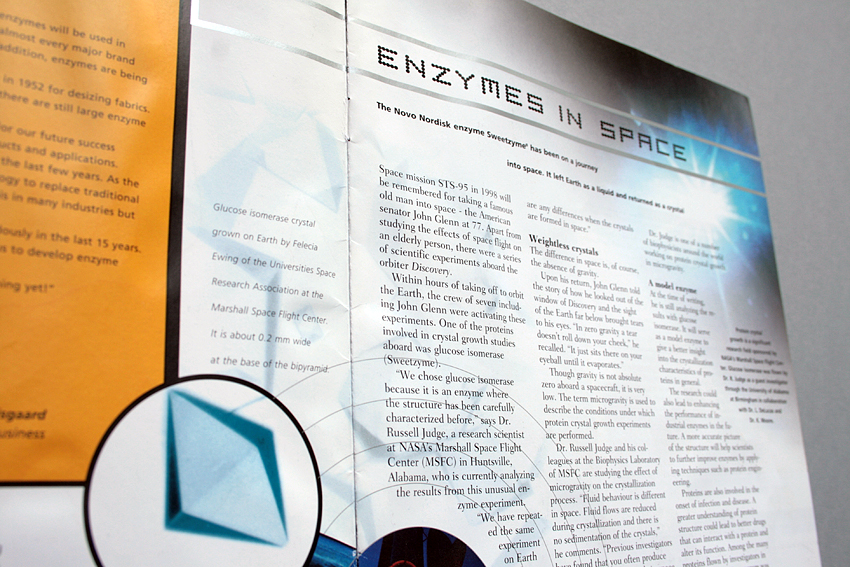I wrote my first article for the customer magazine BioTimes in 1986 and then wrote regularly for this quarterly magazine for the next 25 years. The articles were about the use of Novozymes’ enzymes and spanned many different industries. I have visited many of Novozymes’ customers over the years to research customer stories. This was one of the more unusual stories requiring a phone interview with a scientist at NASA.
“Enzymes in space
The enzyme Sweetzyme has been on a journey into space. It left Earth as a liquid and returned as a crystal.
Space mission STS-95 in 1995 will be remembered for taking a famous old man into space – the American senator John Glenn at 77. Apart from studying the effects of space flight on an elderly person, there were a series of scientific experiments aboard the orbiter Discovery. Within hours of taking off to orbit the Earth, the crew of seven including John Glenn were activating these experiments. One of the proteins involved in crystal growth studies aboard was glucose isomerase (Sweetzyme).
“We chose glucose isomerase because it is an enzyme where the structure has been carefully characterized before,” says Dr. Russell Judge, a research scientist at NASA’s Marshall Space Flight Center (MSFC) in Huntsville, Alabama, who is currently analyzing the results for this unusual enzyme experiment. “We have repeated the same experiment on Earth to see if there are differences when the crystals are formed in space.”
Weightless crystals
The difference in space is, of course, the absence of gravity. Upon his return, John Glenn told the story of how he looked out of the windows of Discovery and the sight of the Earth far below brought tears to his eyes. “In zero gravity, a tear doesn’t roll down your cheek,” he recalled. “It just sits on your eyeball until it evaporates.”
Produced by Datagraf in Denmark.

